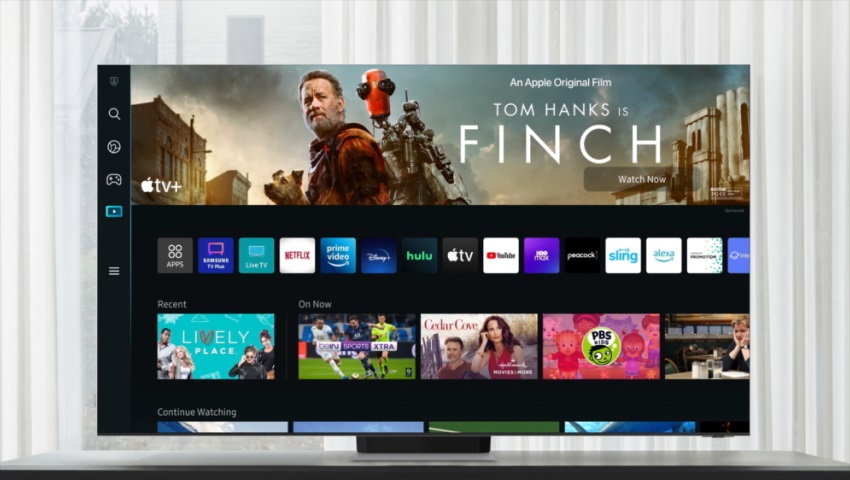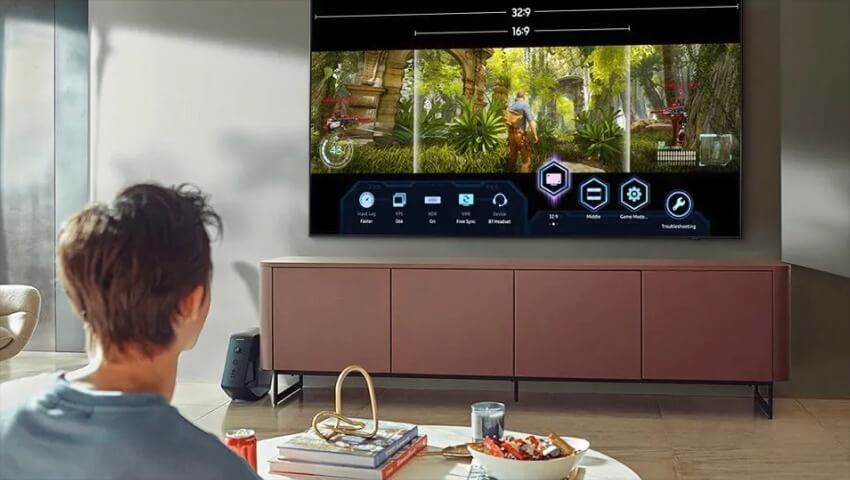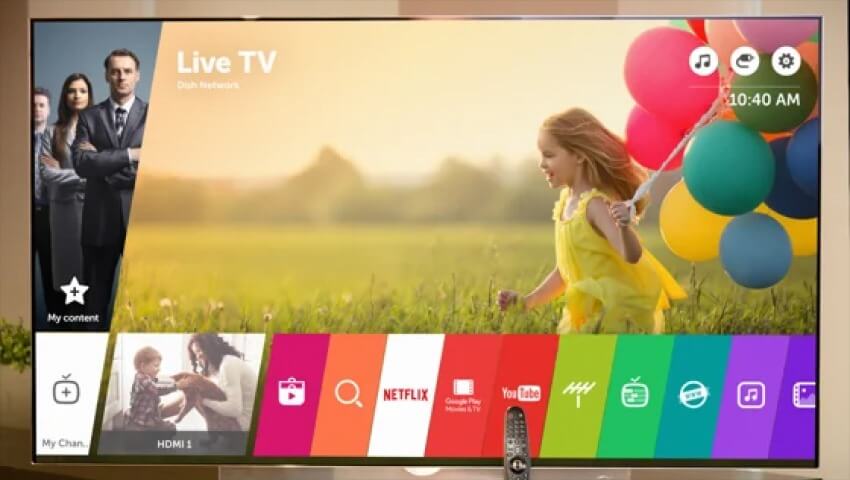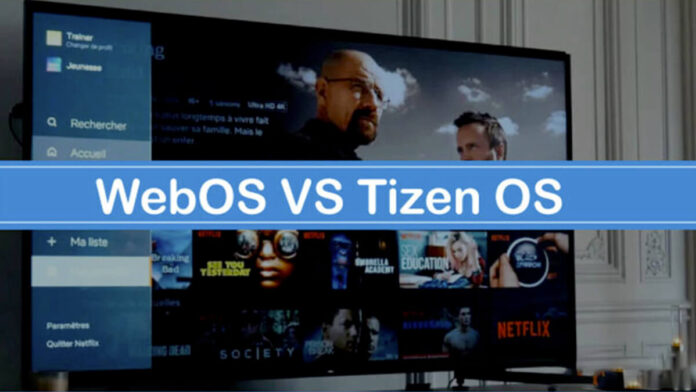WebOS is a Linux-based OS initially created by Palm, Inc. and later purchased by LG Electronics. It is primarily used as the operating system for LG’s smart TVs. WebOS TV vs TizenOS TV has a user-friendly interface and supports many apps, including popular streaming services like Netflix and Hulu. It also supports voice control through digital aides like Amazon’s Alexa and Google Assistant.
Tizen is an open-source operational design built on the Linux kernel and WebKit runtime. It was developed by the Tizen Association, which comprises companies including Samsung, Intel, and Huawei. Tizen is the operating system for various devices, including smart TVs, smartphones, and smartwatches. One of the main advantages of Tizen is that it is positively specialized and can be tailored to the requirements of various devices.
Overall, both WebOS and Tizen are capable operating systems for smart TVs.In this article, we have a glance at ‘WebOS Vs TizenOS. Which one is more acceptable for smart TV
What Is WebOS?
WebOS, short for “Web Operating System,” is an operating system that was originally developed by Palm, Inc. for their Palm Pre smartphone in 2009. It was later acquired by Hewlett-Packard (HP) and used in various devices, including tablets and smart TVs. WebOS is notable for its unique approach to user interface design and its focus on web technologies.
Here are some key features and characteristics of WebOS:
- Card-Based Multitasking: One of the standout features of WebOS is its card-based multitasking system. Users can open and manage multiple applications, each represented as a card that can be swiped in and out of view. This intuitive interface made it easy to switch between and manage open apps.
- Web Technologies: WebOS is built on web technologies like HTML, CSS, and JavaScript. This means that app development for WebOS primarily involves web development skills. Developers could use these familiar technologies to create apps for the platform.
- Synergy: WebOS introduced a feature called Synergy, which aimed to seamlessly integrate and sync data from various sources such as email, contacts, and calendars. This made it easier for users to manage their information across different accounts and services.
- Universal Search: WebOS included a universal search feature that allowed users to search for content not only within the device but also on the web. It provided quick access to information and content from various sources.
- Gesture-Based Navigation: WebOS relied heavily on gesture-based navigation, with swipe gestures playing a central role in moving between apps and managing open cards.
What Is TizenOS?
Tizen OS is an open-source operating system primarily developed and maintained by the Tizen Association, which includes members like Samsung, Intel, and various other companies. Tizen is designed to be a flexible and versatile platform that can run on a wide range of devices, including smartphones, tablets, smart TVs, wearables, and other Internet of Things (IoT) devices.

Here are some key features and aspects of Tizen OS:
- Open Source: Tizen is based on open-source software, which means that its source code is freely available for developers to view, modify, and contribute to. This open approach encourages collaboration and innovation within the developer community.
- Multi-Device Support: Tizen is not limited to one type of device. It is designed to be a cross-platform operating system, allowing manufacturers to use it on various devices, from smartphones to smart TVs and smartwatches to smart TVs, in-vehicle infotainment systems, and more.
- Web-Based Apps: Tizen primarily uses web technologies like HTML5, JavaScript, and CSS for application development. This approach makes it relatively easy for web developers to create apps for Tizen-powered devices.
- Smart TV Platform: Tizen is well-known for its use as a smart TV operating system. Samsung’s smart TVs have been using Tizen as their primary operating system for years.
- IoT Integration: Tizen also has a role in the Internet of Things (IoT) ecosystem, as it can be used in various IoT devices to provide connectivity and control.
➢ Accessibility of WebOS VS TizenOS
WebOS, developed by LG Electronics, includes several built-in accessibility features such as text-to-speech, screen magnification, and high contrast mode. These features can make WebOS-powered devices’ interfaces more convenient to users with visible impairments or other disabilities.
Tizen OS, developed by the Tizen Association, also includes various accessibility features such as text-to-speech, screen magnification, and high contrast mode. Additionally, Tizen OS provides support for external assistive technologies such as screen readers, which can help users with visual disabilities or special needs interact with Tizen OS-powered devices.
Overall, both WebOS and Tizen OS include various accessibility features that can help make their respective devices more accessible to users with disabilities. Suppose you are considering using a device running either of these operating systems. In that case, it is worth checking out the specific accessibility features that are available to ensure that the device meets your needs.
➢ Gaming Support in WebOS TV And TizenOZ TV
WebOS and Tizen OS operate on various devices, including smart TVs. In this context, the gaming support available on smart TVs running these operating systems is worth considering.

WebOS-powered smart TVs have various built-in elements that can improve the gaming affair. For example, many WebOS-powered intelligent TVs support high dynamic range (HDR) content, which can provide a more immersive and visually stunning gaming experience. Additionally, WebOS-powered smart TVs often support various gaming controllers and other accessories, making playing games on the TV easier.
There are many options regarding the games available on WebOS-powered smart TVs. For example, some WebOS-powered smart TVs have a built-in app store or other means of downloading and installing games, while others may require external devices such as a gaming console or streaming device to play games.
The types of games available on Tizen OS-powered smart TVs will depend on the specific TV model and any external devices used. However, a wide variety of games should be available for Tizen OS-powered smart TVs, including casual and more complex console-style games.
➢ Set Up In WebOS TV Compared To TizenOS TV
To set up a TV running WebOS, you must obey the directions furnished with the TV or on the manufacturer’s website. This will typically involve connecting the TV to a power source, connecting it to an external display (such as a monitor or TV), and following the on-screen prompts to complete the setup process.
To set up a TV running Tizen, you will also need to follow the instructions provided with the TV or on the manufacturer’s website. This may involve connecting the TV to a power source, connecting it to an external display, and following the on-screen prompts to complete the setup process.
Overall, setting up a TV running WebOS or Tizen should be similar and easy to follow.
➢ The User Interfaces In WebOS TV vs TizenOS TV
A TV’s user interface (UI) is the interface the user interacts with to access and control the TV’s features. WebOS and Tizen TVs have user interfaces that are easy to use and intuitive.

WebOS TVs feature a vertically scrolling home screen that displays a list of installed Firestick apps and content. The home screen also includes a row of “quick access” icons, allowing you to access frequently used features and settings quickly. To access other features and settings, you can use the on-screen menu, which is accessed by pressing the home button on the remote control.
Tizen TVs also feature a vertically scrolling home screen that displays a list of installed apps and content. The home screen also includes a row of “quick access” icons, allowing you to access frequently used features and settings quickly. To access other features and settings, you can use the on-screen menu, which is accessed by pressing the home button on the remote control.
Overall, both WebOS and Tizen TVs have user interfaces designed to be easy to use and intuitive, with a home screen that displays a list of installed apps and content and an on-screen menu that allows you to access other features and settings.
➢ Content Casting in WebOS TV and TizenOS TV
Content casting refers to the ability to stream content from a device, such as a smartphone or a tablet, to a TV. For example, WebOS and Tizen TVs offer content casting, allowing you to stream content from your device to the TV using a wireless connection.
To stream material from a device to a WebOS Television, you must ensure that the TV and the instrument are linked to an identical wireless web. You can then use a casting app, such as LG TV Plus, to stream content from your device to the TV. Some WebOS TVs may also support content casting using other methods, such as Miracast or Chromecast.
To stream material from a device to a Tizen Television, you must also ensure that the TV and the device are connected to the same wireless network. You can then use a casting app, such as Smart View, to stream content from your device to the TV. Some Tizen TVs may also support content casting using other methods, such as Miracast or Chromecast.
WebOS and Tizen TVs offer content casting, allowing you to stream content from a device to the TV using a wireless connection.
Also See: Tizen TV vs. Google TV: Which is better?
➢ App Content In WebOS TV Vs TizenOS TV
WebOS and Tizen TVs offer a range of apps you can download and install to access additional content and features. The types of apps available on WebOS and Tizen TVs may vary, but they can include streaming apps, such as Netflix and Hulu, games, social media apps, and other apps.
To access the app store on a WebOS TV, you will need to use the on-screen menu to navigate to the app store. From there, you can scan via the accessible apps and install the ones you want to operate. WebOS TVs offer a wide range of apps, including streaming apps, games, and other apps.
To access the app store on a Tizen TV, you will also need to use the on-screen menu to navigate to the app store. From there, you can scan via the accessible apps and install the ones you like to utilize. Tizen TVs offer a wide range of apps, including streaming apps, games, and other apps.
Overall, both WebOS and Tizen TVs offer a wide range of apps you can download and install to access additional content and features. However, in WebOS, you cant download android apps.
Conclusion
Both WebOS and Tizen are operating systems that are used on smart TVs, as well as other devices such as smartphones and smartwatches. Both offer a user-friendly interface and a range of features, such as voice assistance, content casting, and a selection of apps you can download and install.
In terms of differences, one key difference between WebOS and Tizen is the manufacturer. WebOS was developed by LG Electronics, while Samsung and the Linux Foundation developed Tizen. This may affect the specific features and functionality of TVs running each operating system.
Overall, both WebOS and Tizen TVs offer a wide range of features and are user-friendly, so the better choice will depend on your preferences and the specific features you are looking for in a TV. We hope this blog on ‘WebOS Vs TizenOS. Which one is more acceptable for smart TV’ is useful to the readers.


